| ‘ J-PARC News - September 2016 (Issue #137) |
| Elucidation of the Specific Structure of Ice Containing Large Amounts of Salt (August 26, Press Release) |
|---|
| In joint research with the University of Tokyo, the Japan Atomic Energy Agency (JAEA), J-PARC Center, and the Comprehensive Research Organization for Science and Society Research Center for Neutron Science and Technology , a research group led by Professor S. Klotz of the Universite de Paris-VI Universite Pierre-et-Marie-Curie performed cooling, pressurization and heating of aqueous solutions of lithium chloride and lithium bromide at maximum soluble concentration, thereby synthesizing a high-pressure phase of ice (ice VII phase) containing lithium ions and chloride/bromide ions at high concentration, and successfully elucidated its crystal structure using the PLANET High-Pressure Neutron Diffractometer at the Materials and Life Science Experimental Facility (MLF). It was found that, unlike ordinary high-pressure ice not containing salt, high-pressure ice containing salt at high concentration exhibits almost random water molecule orientation, and most of the hydrogen bond network is broken. This sort of structure is not seen in other ice polymorphs and hydrogen bond materials. Thus there is a possibility it may have novel properties, and this is likely to have an impact on a broad range of research in areas such as material science and planetary science. |
| |
 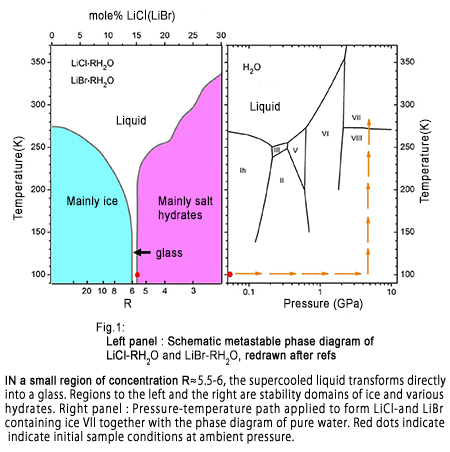
 * Click here to enlarge. * Click here to enlarge. |
| |
 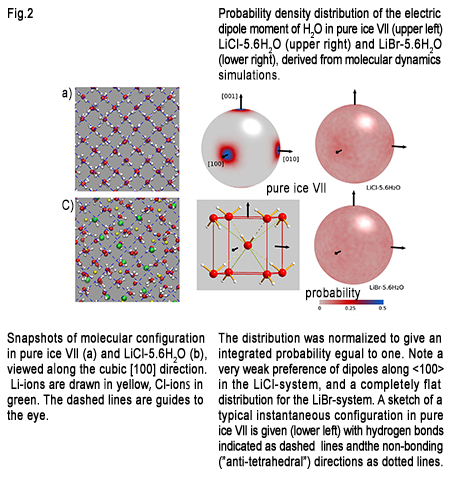
 * Click here to enlarge. * Click here to enlarge. |
| |
| £to Page Top |
| |
|
| Third International Workshop on Technology and Components of Accelerator-Driven Systems (September 6-9, Hotel Terrace The Garden Mito, Mito city) |
|---|
| Safe and secure disposal of radioactive waste is a major issue shared by most of the countries with nuclear power throughout the world. R&D is being conducted worldwide on partition/transmutation technology, as an extremely effective means of reducing the gvolume and toxicity of radioactive wasteh. With this technology, we aim to classify the substances contained in radioactive waste into a number of groups based on their characteristics and transmute groups of substances with long-term radioactivity into groups of substances with short lives to facilitate disposal. A leading candidate for transmutation of substances is Accelerator-Driven Systems (ADS), a new type of nuclear power system combining an accelerator and a nuclear reactor, and the active R&D is being carried out both inside and outside Japan by the Japan Atomic Energy Agency (JAEA) and other organizations. This time, the JAEA, together with the Nuclear Energy Agency of the Organization for Economic Co-operation and Development (OECD/NEA) held an international workshop in Mito city. About 80 experts were invited from 12 countries all over the world; including Belgium and other European countries, China, the U.S., and they discussed state-of-the-art technology and equipment development relating to ADS. This conference has previously been held at three-year intervals in Germany and France, and this was the third meeting. From the J-PARC Center, Toshinobu Sasa, the Leader of the Target Technology Development Section of the Nuclear Transmutation Division provided an overview of the Transmutation Experimental Facility (TEF) planned in J-PARC to develop ADS, and efforts relating to that project. There were many presentations on development of basic technologies, such as target technology essential for constructing the experimental facility, handling technology for liquid metals, and handling technology for nuclear fuel for nuclear transmutation. Throughout the workshop, there was an information exchange useful for R&D going forward. On the last day, there was a tour of the ADS related experimental instruments installed at the Nuclear Science Research Institute, a visit to the projected site for the Transmutation Experimental Facility, and a lively exchange of views right in front of the actual equipment. |
| |
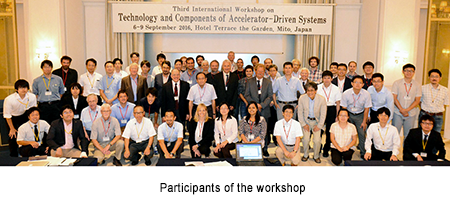
 * Click here to enlarge. * Click here to enlarge. |
| |
| £to Page Top |
| |
|
| Symposium on Science Explored by Ultra Slow Muon, Innovative Area Conference (August 26-27, IQBRC) |
|---|
| Using the ultra slow muon microscope* installed in the U-line of the muon experimental area of the Materials and Life Science Experimental Facility (MLF), generation of ultra slow muon was confirmed for the first time on February 21 of this year, and by June 30, the end of operations for the first half of Fiscal Year (FY) 2016, researchers succeeded in acceleration of muon decay positrons from a sample. This time, a public symposium was held at the Ibaraki Quantum Beam Research Center (IQBRC), where all members of this area met together, and discussed the possibility of a new ultra slow muon microscope based on previous research results. The symposium began with an opening message by Kazuyoshi Yamada, Director of the Institute of Materials Structure Science at the High Energy Accelerator Research Organization (KEK). Next was a general explanation by the area representative Prof. Eiko Torikai (University of Yamanashi, guest researcher at J-PARC), and then four reports by the project research teams were given by team leader, Dr. Yasuhiro Miyake (Head, KEK) of the J-PARC Center's Muon Science Section, Dr. Ryosuke Kadono, leader of the Muon Science Section,@Prof. Eiko Torikai, and Dr. Tomoyuki Wada and others from RIKEN. After that, 34 research results were presented by persons involved in the area, in sessions classified by presentation content, and there was a lively exchange of views. On the 25th, prior to the conference, the ultra slow muon experimental instrument had its first public showing. *This instrument was installed as part of research over fiscal 2011-2015, through a Grant-in-Aid for "Scientific Research on Innovative Areas" by the Ministry of Education, Culture, Sports, Science and Technology. |
| |
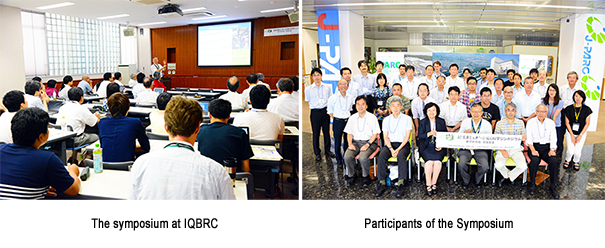
 * Click here to enlarge. * Click here to enlarge. |
| |
| £to Page Top |
| |
|
| 3rd Symposium on Complementary Use of Large Experimental Facilities and Super Computers for State-of-the-Art Battery Materials (September 1, Akihabara, Tokyo) |
|---|
| Complementary use of large experimental facilities such as SPring-8 and MLF with the "K computer" and other supercomputers can help produce research results through the complementary synergy of the characteristics of experimental techniques and numerical simulation methods. Therefore, there are high expectations on this approach from various fields. This year, a symposium for promoting complementary use was held jointly by JASRI, CROSS, RIST* and other organizations on the theme of "state-of-the-art battery materials." Participants presented examples of high-level research based on complementary use in this field, and presented an overview of the nature of research with an eye toward complementary use in the future. Jun Sugiyama, researcher at the Toyota Central R&D Labs, Inc., gave a report entitled "Ion Diffusion in Battery Materials as Seen with Muons," and also introduced the ultra slow muon microscope of the MLF. In the initial session prior to these talks, there was a report on the current status of large experimental facilities, and Toshiji Kanaya, Head of the Materials and Life Science Division of the J-PARC Center provided a basic overview of problems with the neutron target vessel of the MLF, how those problems are being handled, and recent research results. |
| There were 135 participants, including participants from about 40 companies.*JASRI: Japan Synchrotron Radiation Research Institute, CROSS: Comprehensive Research Organization for Science and Society, RIST: Research Organization for Information Science and Technology |
| |
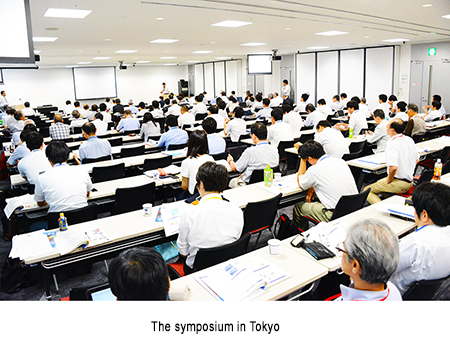
 * Click here to enlarge. * Click here to enlarge. |
| |
| £to Page Top |
| |
|
| Science Lecture: A Trip through Space-Time Featuring the Neutrino Elementary Particle (September 3 and 17, Tokai-mura Industry and Information Plaza "iVil") |
|---|
| An NPO, HSE Risk C3 is engaged in support activities such as the Tokai Nuclear Power Science Town Project promoted by Tokai village. This time, in response to village residentsf interest in neutrinos, the NPO held a total of four lectures on the topic of "the neutrino elementary particle," including tours of J-PARC facilities. In July of this year, Takaaki Kajita, Director of the Institute for Cosmic Ray Research, University of Tokyo gave a talk in the village entitled "Neutrinos: The Link between Space and Elementary Particles" commemorating his winning the Nobel Prize in Physics, following this event, village residents desired to learn more about neutrinos. Shinichi Sakamoto, a public relations advisor of the J-PARC Center worked as a lecturer, and in the two lectures held this month, he explained everything; from the basics of neutrinos to the neutrino research involved Nobel Prize in Physics in last year, and the latest results such as the T2K (Tokai to Kamioka) experiment using J-PARC. While he was explaining the hard-to-grasp phenomenon of "neutrino oscillation" whereby a neutrino (total three types) changes into another type with the passage of time in an easy-to-understand way using experimental equipment such as tuning forks, some of the participants were seen to be nodding, and seemed to be deepening their understanding of neutrinos. The next lecture is about the accelerator which generates neutrinos in the T2K experiment. |
| |
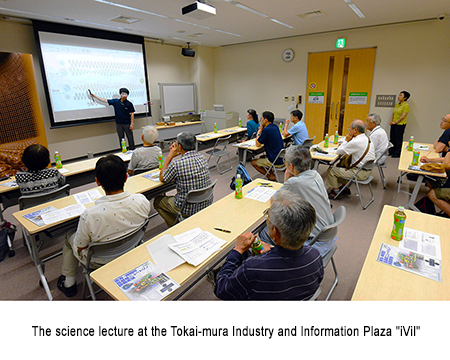
 * Click here to enlarge. * Click here to enlarge. |
| |
| £to Page Top |
| |
|
| Class to Experience Chigiri-e, Images Made with Torn Japanese Paper (September 8, Advanced Science Research Center Building, Nuclear Science Research Institute) |
|---|
| Since 2014, the JAEA Office of International Affairs and J-PARC Center have held various hands-on classes as opportunities to deepen international exchange within the agency. This time, a class was held to experience chigiri-e, where images of nature in the four seasons, landscapes and seasonal scenes are created using washi, a traditional Japanese type of paper. Participants selected a pattern they liked, such as a favorite creature or animal, and completed works on a signage card by using washi with various colors and textures. Even with the samepattern, you could see the individuality of each artist due to differences in how they tore the paper and selected colors. |
| |
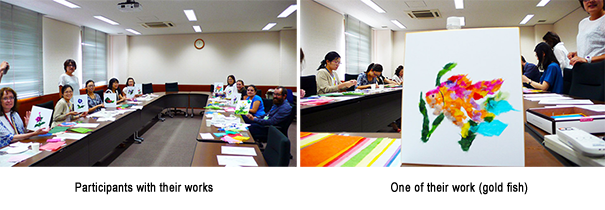
 * Click here to enlarge. * Click here to enlarge. |
| |
| £to Page Top |
| |
|
| Class to Experience Flower Arrangement (September 15, Nuclear Science Research Institute) |
|---|
| As a hands-on experience to deepen international exchange within the JAEA, the second flower arrangement class this fiscal year was held on the 15th. Including a teacher, 20 people enjoyed this traditional Japanese art. For the arrangement, they used Dracaena surculosa and roses. Looking at a sample in a bowl by the teacher, and some instructions, participants arranged the flowers under the teacher's guidance. In addition to staff working at the agency and foreign researchers, many overseas research students who came to Japan to attend lectures at the Nuclear Human Resource Development Center, and they took up the challenge of flower arrangement in a friendly atmosphere. When their works were completed, there were scenes here and there that participants were taking photos of themselves together with their arrangements with their smartphones. A member of the Tokai-mura International Association (TIA) acted as the teacher. |
| |

 * Click here to enlarge. * Click here to enlarge. |
| |
| £to Page Top |
| |
|
©2016 J-PARC Center. All rights reserved.
|
|